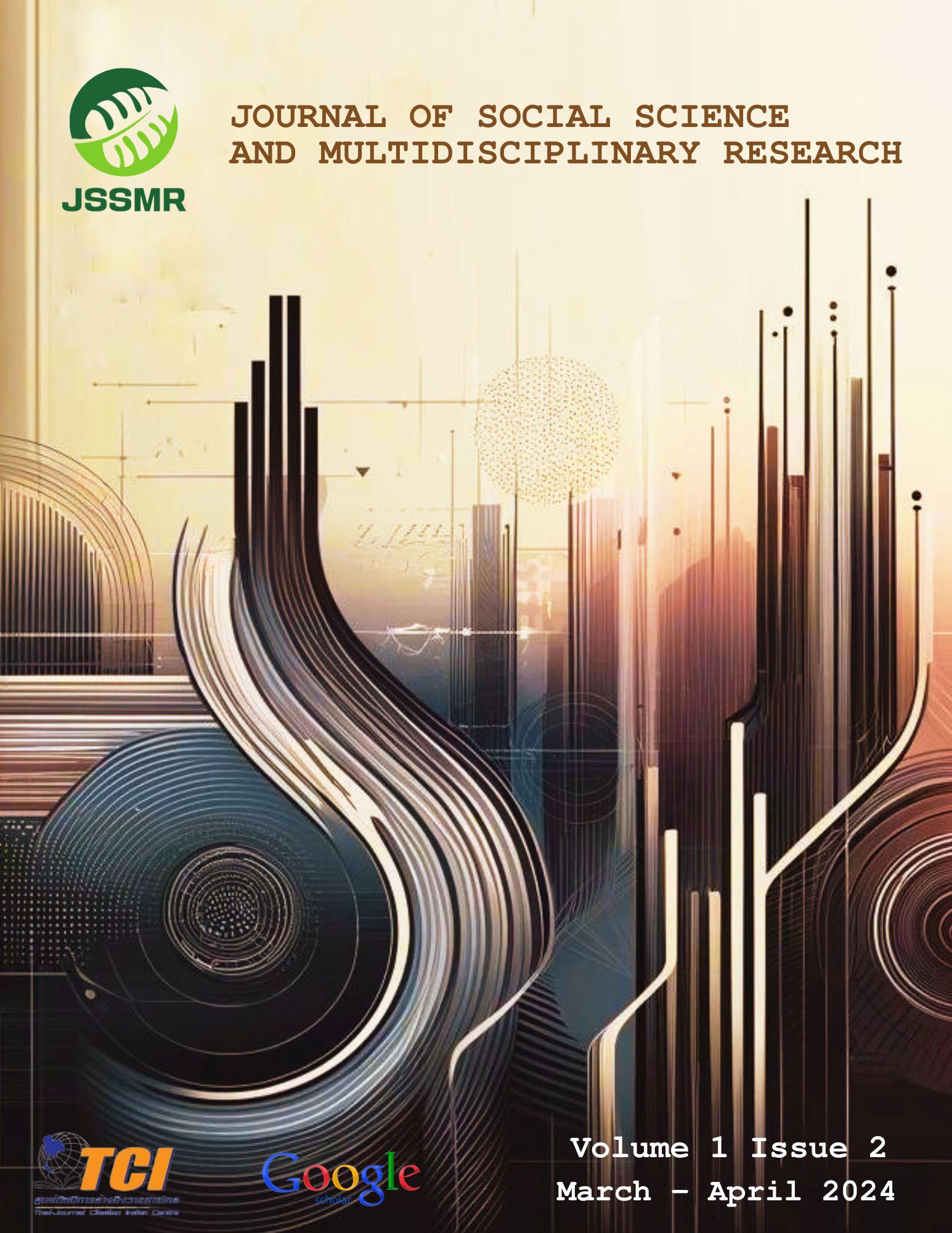Exploring the Drive to Depart: How Demographics Influence Turnover Intentions among Employees at Sanam Chai Sub-district Administrative Organization in Suphanburi
Keywords:
demographic factors, staff, turnover intentionsAbstract
This study focuses on 1) gathering and analyzing the basic profile of survey participants, 2) exploring the turnover intentions among staff members of the Sanam Chai Sub-district Administrative Organization in Mueang Suphanburi District, Suphanburi Province, and 3) examining how demographic variables influence turnover intentions. Employing a quantitative methodology, the research utilizes questionnaires to collect data. Analysis of the data is conducted using descriptive statistical methods, such as frequency, percentages, mean values (μ), and standard deviations (σ), alongside inferential statistical techniques including the t-Test and One-way Analysis of Variance (ANOVA). Results from the study reveal a generally high inclination towards resigning among the surveyed employees. Tests of the research hypotheses show that factors like gender, educational attainment, marital status, department affiliation, and monthly income do not statistically affect turnover intentions. On the other hand, educational level and marital status, are found to significantly influence turnover intentions with a statistical significance at the .05 level.
References
Aunwiset, J. (2019). Factors affecting employee turnover intentions in generation Y automobile parts manufacturing companies in the Lam Chabang Industrial Estate. Journal of Graduate Research, 10(1), 205-217.
Chanonok, Y. (2018). The relationship between job motivation and organizational commitment influencing employee turnover: A case study of Pan Pacific Paper Industry Limited. Retrieved from file:///C:/Users/USER/Downloads/854The%20Manuscript%20(Full%20Article%20Text)-1894-1-10-20190624.pdf.
Kamsap, W. (2020). Factors affecting decision-making intentions to resign among employees of the Ministry of Energy. Master's Thesis, Sripathum University.
Kotler, P. (2000). Marketing management. New Jersey: Prentice-Hall.
Lambert, E. G., Hogan, N. L., & Barton, S. M. (2001). The impact of job satisfaction on turnover intent: a test of a structural measurement model using a national sample of workers. The Social Science Journal, 38(2), 233-250.
Lu, H., Barriball, K. L., Zhang, X., & While, A. E. (2012). Job satisfaction among hospital nurses revisited: a systematic review. International Journal of Nursing Studies, 49(8), 1017-1038.
Maichan, A. (2018). Factors affecting work performance efficiency of installation machinery group employees in Songkhla Province. MBA Thesis, Songkhla Nakarin University, Songkhla Province.
Mobley, W. H., Horner, S. O., & Hollingsworth, A. T. (1978). An evaluation of precursors of hospital employee turnover. Journal of Applied Psychology, 63(4), 408.
Mowday, R. T., Porter, L. W., & Steers, R. M. (2013). Employee-organization linkages: The psychology of commitment, absenteeism, and turnover. Academic press.
Nadiri, H., & Tanova, C. (2010). An investigation of the role of justice in turnover intentions, job satisfaction, and organizational citizenship behavior in hospitality industry. International Journal of Hospitality Management, 29(1), 33-41.
Price, J. L. (1977). The study of turnover. Iowa State Press.
Roberts, K. H., Hulin, C. L., & Rousseau, D. M. (1978). Developing an interdisciplinary science of organizations. (No Title).
Saeutwej, S., & Puangyoykeaw Setthakorn, K. (2018). The study of job embeddedness and turnover intention of beauty assistant in department stores, Bangkok area. Journal of Humanities and Social Sciences, Phayao University, 7(2), 247-263.
Sasisirimanrat, I. (2018). Motivations for regular employee resignation. Master's Thesis in Management, Graduate School, Mahidol University.
Satavethin, P. (1990). Principles of public relations. Department of Public Relations, Chulalongkorn University.
Satavethin, P. (1997). Principles of public relations. Bangkok: Phapim Publishing.
Sereerasat, S. (2004). Marketing strategies affecting consumer repurchase intentions and willingness to pay among cosmetics consumers in Supermarkets. Retrieved from http://dspace.spu.ac.th/ bitstream/123456789/7952/6/2.pdf.
Singwansri, G. (2013). Supplementary documents for teaching human resource management, human resource management affecting socio-economic, and political environment. Bangkok: Nakhon Pathom Rajabhat University.
Songaaroonkul, W. (2015). Factors influencing the intention to resign of command-level employees: A case study of Thai Cement Company Limited. Master's Thesis in Business Administration, Graduate School, Chulalongkorn University.
Spector, P. E., & Jex, S. M. (1991). Relations of job characteristics from multiple data sources with employee affect, absence, turnover intentions, and health. Journal of applied psychology, 76(1), 46.





